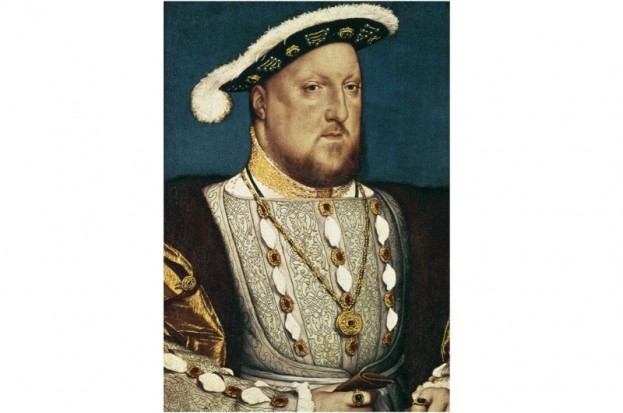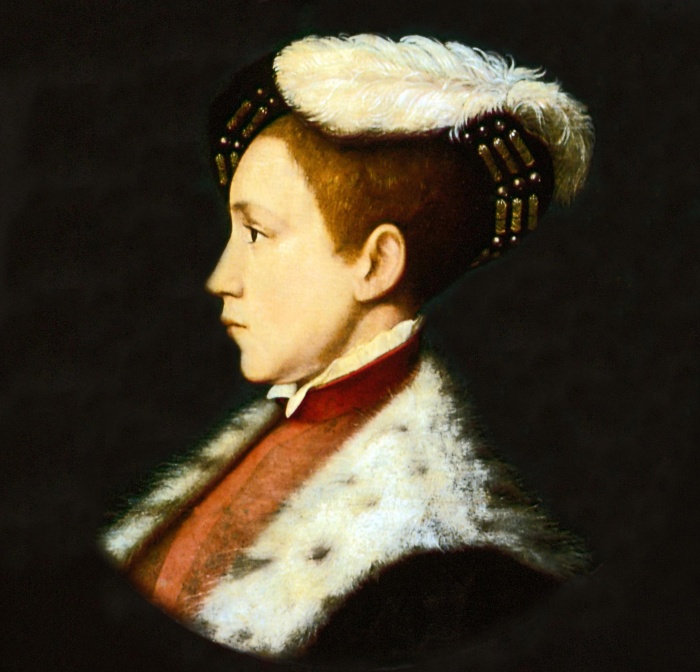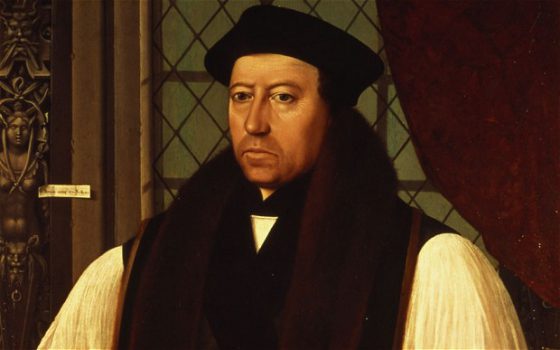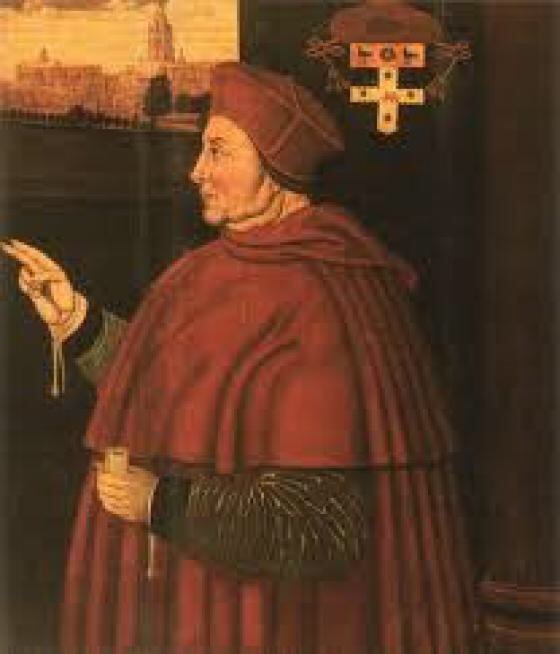From mysterious hunting ‘accidents’ to the public execution of Charles I, dozens of British royals died in suspicious or shocking circumstances. Historian Nicola Tallis investigates…

Royal status brings with it privilege and power – but also danger, particularly the risk of assassination by those craving that power. From the Norman conquest to Charles’s execution in 1649, many British men, women and children of royal blood died in extraordinary circumstances. Deaths early in that period were often shrouded in mystery, but by the 17th century circumstances had changed to an extraordinary extent – for the first time an executioner severed the head of a king of England: Charles I, condemned by his own people…
William II meets his fate in the forest
On 2 August 1100 King William II, third son of William the Conqueror, was hunting in the New Forest. The chronicler William of Malmesbury reported that after dinner the king, nicknamed ‘Rufus’, went into the forest “attended by few persons”, notably a gentleman named Walter Tirel. While most of the king’s party “employed in the chase, were dispersed as chance directed,” Tirel remained with the king. As the sun began to set, William spotted a stag and “drawing his bow and letting fly an arrow, slightly wounded” it.
In his excitement the king began to run towards the injured target, and at that point Tirel, “conceiving a noble exploit” in that the king’s attention was occupied elsewhere, “pierced his breast with a fatal arrow”. William fell to the ground and Tirel, seeing that the king was dead, immediately “leaped swiftly upon his horse, and escaped by spurring him to his utmost speed”.
Upon discovering William’s body, the rest of his party fled and, in an attempt to protect their own interests, readied themselves to declare their allegiance to the next king. It was left to a few countrymen to convey the dead king’s corpse to Winchester Cathedral by cart, “the blood dripping from it all the way”.
Was William’s death an accident, or was it murder? An accident was possible, but there were many who believed otherwise. William’s younger brother immediately assumed the throne and swiftly had himself crowned Henry I. Henry had much to gain from his brother’s death, and Tirel may have been in his employ. William had, however, been an unpopular king, and his death was “lamented by few”.
 King William II of England, aka William Rufus, c1100. (Photo by Hulton Archive/Getty Images)
King William II of England, aka William Rufus, c1100. (Photo by Hulton Archive/Getty Images)
The Lionheart and eyeless Art
Almost 100 years later, Henry I’s great-grandson, Richard I, also met a violent end at the point of an arrow, but in very different circumstances. Richard had spent the majority of his 10-year reign fighting abroad on crusade; he was a brave solider who inspired loyalty in his men. In 1199, while he was besieging the Château de Châlus-Chabrol, a crossbow bolt struck him in the shoulder. Though the shot did not kill him, it penetrated deep into his body. Though removal of the bolt by a surgeon was a painful ordeal, Richard survived – but before long the wound became infected and gangrene set in. It became clear that the king’s days were numbered, and on 6 April, 11 days after he was shot, “the man devoted to martial deeds, breathed his last.”
Richard was succeeded by his younger brother, John. However, though John was accepted as king of England he had a rival for his French lands: Arthur of Brittany, son of John’s brother, Geoffrey, who had died over a decade earlier. In 1202, John’s forces captured Arthur at Mirebeau, where the latter had been attempting to besiege the castle in which his grandmother (John’s mother), Eleanor of Aquitaine, was sheltering. Arthur was taken to Falaise, where – it was later claimed – John gave orders for his 16-year-old nephew to be “deprived of his eyes and genitals”, but the jailer refused to obey such a cruel command. Shortly afterwards, the boy was moved to Rouen where, on the evening of 3 April 1203, it seems that John himself, “drunk with wine and possessed of the Devil”, killed Arthur personally. The young boy’s lifeless body was reputedly weighed down with a heavy stone and thrown into the river Seine.
In the two centuries after the murder of Arthur of Brittany, both Edward II and Richard II were deposed. The latter was almost certainly starved to death in Pontefract Castle, but controversy still surrounds the end of Edward II – he may have been murdered in Berkeley Castle, but several modern historians are of the opinion that he escaped abroad.
 Richard I, aka ‘Richard the Lionheart’, depicted plunging his fist into a lion’s throat, c1180. (Photo by Hulton Archive/Getty Images)
Richard I, aka ‘Richard the Lionheart’, depicted plunging his fist into a lion’s throat, c1180. (Photo by Hulton Archive/Getty Images)
The bloody Wars of the Roses
In the middle of the 15th century, the Wars of the Roses broke out, causing a profusion of bloodshed that did not exclude royal or noble families. After a struggle that saw the Lancastrian King Henry VI deposed in favour of the Yorkist Edward IV, and a brief period of restoration for Henry VI (commonly referred to as the readeption), on 4 May 1471 the armies of Lancaster and York met at Tewkesbury, where Edward IV won “a famous victory”. It was a fierce battle during which around 2,000 Lancastrians were slain, and the battlefield is still referred to as ‘Bloody Meadow.’
For Henry’s son and heir, the 18-year-old Prince Edward of Lancaster, Tewkesbury had been his first experience of war, and one that he would not survive. Reports of the precise manner of the prince’s death vary: most sources state that the he was killed in the field, whereas the Yorkist author of the Arrivall of Edward IV, who claimed to be a servant of Edward IV’s and a witness to many of the events about which he wrote, asserts that Edward “was taken fleeing to the townwards, and slain in the field”. Later Tudor historians, however, implied that the prince had been murdered “by the avenging hands of certain persons,” on the orders of Edward IV. Whatever the circumstances, the Lancastrian heir had been removed; now all that remained was for his father to be eliminated.
While the battle of Tewkesbury raged, Henry VI was a prisoner in the Tower of London. Following his victory, Edward IV travelled to London in triumph, arriving on 21 May. That same evening, Henry VI was reportedly praying in his oratory within the Wakefield Tower when he “was put to death”. Though the author of the Arrivall stated that Henry died of “pure displeasure and melancholy” as a result of being told of the death of his son, there is little doubt that he died violently. The examination of his skull in 1911 revealed that to one piece “there was still attached some of the hair, which was brown in colour, save in one place, where it was much darker and apparently matted with blood,” consistent with a blow to the head. Many believed that Henry had been murdered at the hands of the king’s brother Richard, Duke of Gloucester, but though Richard may have been present, the order undoubtedly came from Edward IV.
 Henry VI , c1450. (Photo by Hulton Archive/Getty Images)
Henry VI , c1450. (Photo by Hulton Archive/Getty Images)
The slaughter also extended to Edward’s own family. The relationship Edward shared with his younger brother George, Duke of Clarence, was tumultuous, to say the least. After several estrangements and reconciliations, in 1477 Clarence finally went too far. Convinced that his brother was conspiring against him, Edward had Clarence arrested; at the beginning of February 1478, he was tried and condemned to death. On 18 February Clarence was executed within the confines of the Tower of London. According to several contemporary sources, at his own request the duke was drowned after being “plunged into a jar of sweet wine” in the Bowyer Tower. Clarence’s daughter, Margaret Pole, was later painted wearing a bracelet with a barrel charm, which appears to support this story. The duke’s death orphaned both Margaret and her younger brother Edward, Earl of Warwick. Like their father, both would meet violent ends.
The princes in the Tower
Edward IV died unexpectedly on 9 April 1483, leaving as successor his 12-year-old son, also Edward, at that time staying at Ludlow Castle. After his father’s death, the young Prince Edward set out for London but was intercepted en route by his uncle Richard, Duke of Gloucester, who lodged Edward and his brother Prince Richard in the Tower of London. Having been declared illegitimate, on 26 June Edward was deposed in favour of his uncle, who took the throne as Richard III.
Rumours about the fate of the ‘princes in the Tower’ soon began to circulate. Many believe that they were murdered “lying in their beds” on the orders of Richard III, and the skeletons of two youths discovered in the Tower in 1674 seems to support this theory. Some, however, insist that the boys did not die in the Tower but managed to escape. Though their ultimate fate is still obscure, one thing is certain: after the coronation of Richard III on 6 July, neither boy was seen alive again.
 ‘The Young Princes in the Tower’, 1831. After a painting by Hippolyte De La Roche (1797–1856), commonly known as Paul Delaroche. From the Connoisseur VOL XXVII, 1910. (Photo by The Print Collector/Print Collector/Getty Images)
‘The Young Princes in the Tower’, 1831. After a painting by Hippolyte De La Roche (1797–1856), commonly known as Paul Delaroche. From the Connoisseur VOL XXVII, 1910. (Photo by The Print Collector/Print Collector/Getty Images)
Richard III did not hold his throne for long. In 1485 his army was confronted by the forces of the Lancastrian Henry Tudor at Bosworth in Leicestershire. Richard fought bravely in his attempt to defend his crown, but was “pierced with many mortal wounds”, and became the last king of England to be killed on the battlefield. Thanks to the discovery of his skeleton in Leicester, we now know that a blow to the head killed Richard, and that his body was subjected to a number of “humiliation” wounds after his death.
Richard’s successor, Henry VII, ordered the execution of the Duke of Clarence’s son, the Earl of Warwick, beheaded In 1499 for conspiring with the pretender Perkin Warbeck to overthrow the king. Warwick’s sister, Margaret Pole, was executed in 1541 by command of Henry VIII on charges of treason. In her late sixties and condemned on evidence that was almost certainly falsified, Margaret’s death shocked her contemporaries, one of whom observed that her execution was conducted by “a wretched and blundering youth” who “literally hacked her head and shoulders to pieces in the most pitiful manner” so that she bled to death.
Henry VIII’s wives
Henry VIII also notoriously executed two of his wives. Anne Boleyn and Katherine Howard were both condemned on charges of adultery, treason, and, in Anne’s case, incest with her own brother. Anne was almost certainly innocent of the crimes of which she was accused; nevertheless, on the morning of 19 May 1536 she became the first queen of England to be executed. Although her death within the confines of the Tower of London was intended to be a private affair, conducted away from the eyes of curious Londoners, around 1,000 people watched as her head was struck from her body with one strike of a French executioner’s sword.
In 1554 Lady Jane Grey also met her fate at the headsman’s axe. So, too, did Mary, Queen of Scots, executed in February 1587 on the orders of Elizabeth I. The first queen regnant to be beheaded, Mary was decapitated at Fotheringhay Castle in a bloody scene: it took three strokes of the axe to remove her head.
 The execution of Mary, Queen of Scots at Fotheringhay Castle, 1587. From ‘The Island Race’, a book written by Sir Winston Churchill and published in 1964 that covers the history of the British Isles from pre-Roman times to the Victorian era. (Photo by Universal History Archive/UIG via Getty Images)
The execution of Mary, Queen of Scots at Fotheringhay Castle, 1587. From ‘The Island Race’, a book written by Sir Winston Churchill and published in 1964 that covers the history of the British Isles from pre-Roman times to the Victorian era. (Photo by Universal History Archive/UIG via Getty Images)
Mary’s grandson was to suffer a similar ignominious end the following century. Having been defeated in the Civil War, in January 1649 Charles I became the first English monarch to be tried and condemned for treason – there was no precedent for the lawful killing of a king. On the date of his execution, 30 January, Charles stepped out of Banqueting House in Whitehall on to a public scaffold. His head was removed amid a great groan from the crowd, and it was observed that many of those who attended dipped their handkerchiefs in the late king’s blood as a memento.
Charles’s death signalled the abolition of the monarchy, and the establishment of a republic in England. In a public display of contempt for the monarchy, he became the only king of England to be murdered by his subjects. It was a far cry from the dark and mysterious circumstances surrounding the death of William ‘Rufus’ and those other ill-fated royals who came before.
Nicola Tallis is a British historian and author. Her new book Crown of Blood: The Deadly Inheritance of Lady Jane Grey is published by Michael O’Mara Books on 3 November 2016.
To find out more about Nicola, visit nicolatallis.com













